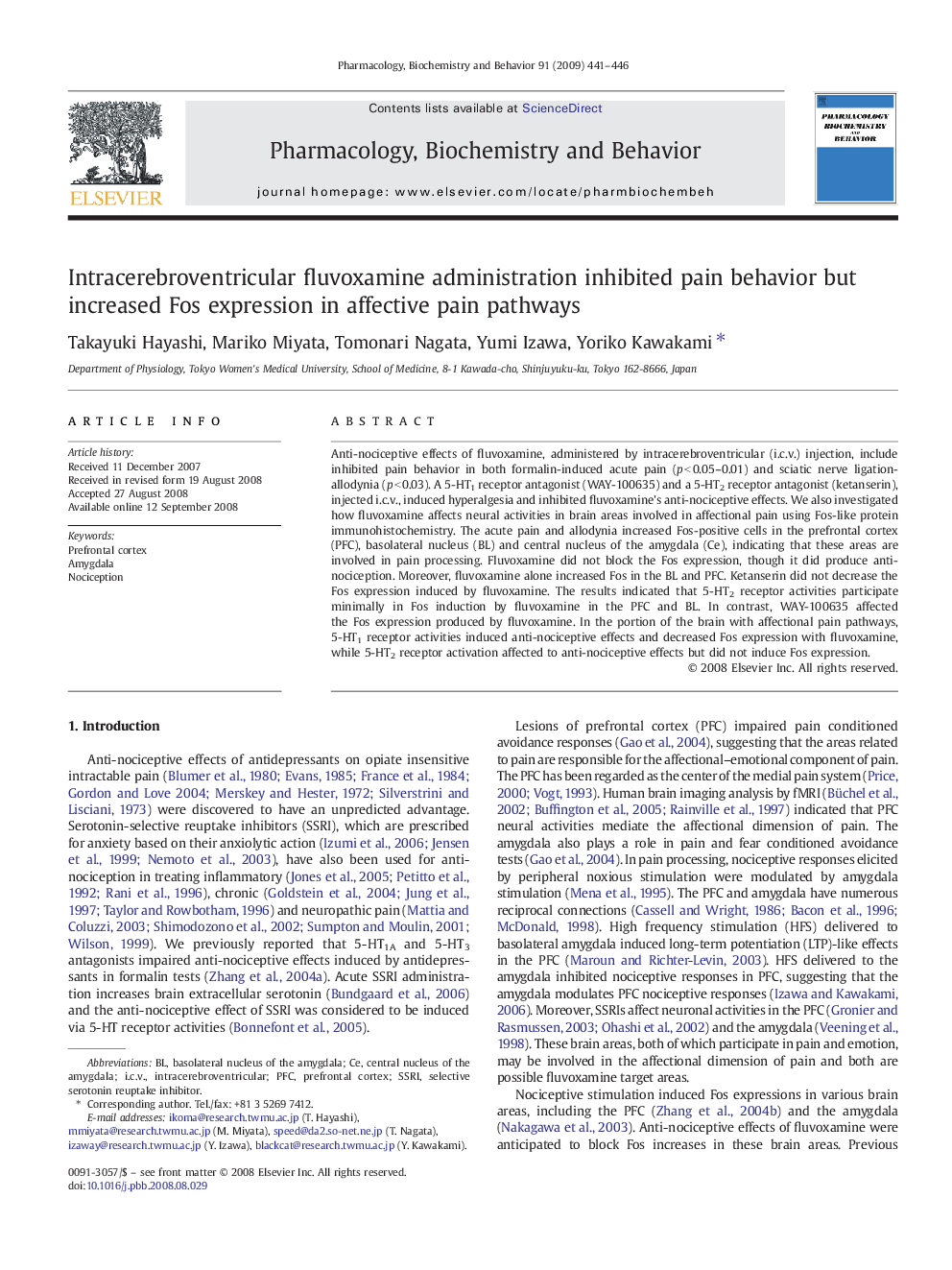| Article ID | Journal | Published Year | Pages | File Type |
|---|---|---|---|---|
| 2014147 | Pharmacology Biochemistry and Behavior | 2009 | 6 Pages |
Anti-nociceptive effects of fluvoxamine, administered by intracerebroventricular (i.c.v.) injection, include inhibited pain behavior in both formalin-induced acute pain (p < 0.05–0.01) and sciatic nerve ligation-allodynia (p < 0.03). A 5-HT1 receptor antagonist (WAY-100635) and a 5-HT2 receptor antagonist (ketanserin), injected i.c.v., induced hyperalgesia and inhibited fluvoxamine's anti-nociceptive effects. We also investigated how fluvoxamine affects neural activities in brain areas involved in affectional pain using Fos-like protein immunohistochemistry. The acute pain and allodynia increased Fos-positive cells in the prefrontal cortex (PFC), basolateral nucleus (BL) and central nucleus of the amygdala (Ce), indicating that these areas are involved in pain processing. Fluvoxamine did not block the Fos expression, though it did produce anti-nociception. Moreover, fluvoxamine alone increased Fos in the BL and PFC. Ketanserin did not decrease the Fos expression induced by fluvoxamine. The results indicated that 5-HT2 receptor activities participate minimally in Fos induction by fluvoxamine in the PFC and BL. In contrast, WAY-100635 affected the Fos expression produced by fluvoxamine. In the portion of the brain with affectional pain pathways, 5-HT1 receptor activities induced anti-nociceptive effects and decreased Fos expression with fluvoxamine, while 5-HT2 receptor activation affected to anti-nociceptive effects but did not induce Fos expression.
